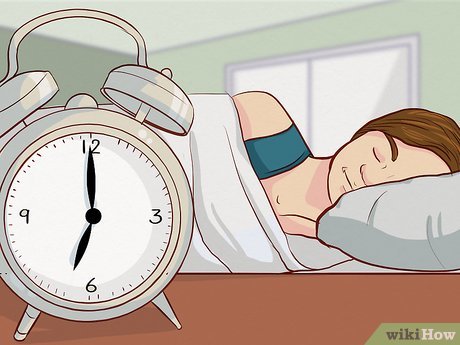
The Invisible Stress Trigger in Your Morning Routine You Never Noticed
Josh Shear – You wake up, brush your teeth, grab your phone, and pour your coffee maybe even squeeze in a quick scroll through the news or social media before jumping into emails. It seems harmless. Normal, even. But what if this flow of daily actions hides a culprit that quietly chips away at your mental health? The invisible stress trigger in your morning routine you never noticed may not come in the form of an emergency or an argument. It often arrives in silence, wrapped in productivity, disguised as convenience. This subtle enemy doesn’t shout, but it whispers and its impact is far louder than you think.
Many of us spend our mornings unknowingly setting ourselves up for anxiety, distraction, and burnout before the workday even begins. The culprit? It might just be how you interact with your devices before your brain is fully awake.
One of the most overlooked yet powerful contributors to stress in modern life is digital overload especially first thing in the morning. The moment your eyes open, chances are your hand reaches instinctively for your phone. Notifications light up the screen like a control panel of tasks, messages, headlines, and doomscrolling opportunities.
This immediate contact with digital chaos triggers cortisol production the primary stress hormone even before you’ve left bed. The invisible stress trigger in your morning routine you never noticed often begins the second you check your email or read a breaking news alert about something far beyond your control.
Your brain hasn’t had time to gently transition from rest to focus, but the modern world doesn’t wait. And when your brain is forced into reactive mode too early, it sets the tone for the rest of your day.
When you engage with high-stimulation content news headlines, heated messages, social media comments your sympathetic nervous system gets activated. This is the fight-or-flight mode. You might not physically run from a lion, but your body behaves as if it should.
What makes the invisible stress trigger in your morning routine you never noticed so powerful is its stealth. You aren’t aware your body is preparing for battle over a tweet. But your breathing changes. Your heart rate rises. Your mind begins to multitask before it’s even fully conscious.
This rush of cognitive chaos doesn’t just fade away after your coffee. It can linger for hours, impacting your mood, decision-making, and productivity.
Our culture worships the idea of productive mornings. “Start your day strong,” “Win the morning, win the day,” and other motivational slogans are everywhere. But if your definition of a strong start involves diving headfirst into emails, texts, and headlines, you’re beginning the day by handing over your peace of mind.
The invisible stress trigger in your morning routine you never noticed isn’t always about what you do it’s also about what you don’t protect. Protecting the first 30 to 60 minutes of your day from mental clutter is a form of self-respect.
Many high performers and creatives have learned this the hard way. They don’t check messages until after movement, meditation, or some analog ritual like journaling or mindful breakfast. Why? Because the quality of their attention early in the day determines their output and emotional bandwidth.
Your environment matters more than you realize. If your bedroom or kitchen is cluttered with screens, alerts, and glowing reminders of everything you haven’t done yet, your mind will mirror that chaos. And if you’ve trained yourself to believe that you’re already behind when you wake up, you’ll spend your entire morning chasing invisible fires.
The invisible stress trigger in your morning routine you never noticed thrives in an environment where you’re reacting instead of choosing. It thrives in routines that were formed accidentally, not intentionally.
Even the pressure to have a “perfect morning routine” as seen on social media can be toxic. You don’t need a 12-step ritual, sunrise yoga, and a protein-packed smoothie to feel successful. What you need is stillness. Ownership. A chance to breathe before the world barges in.
Read More: You Won’t Believe What This New Smart Bed Can Do for Seniors!
If you’re unsure whether this hidden stressor is affecting you, here are a few signs:
You feel anxious within 15 minutes of waking
You’re already checking work notifications before brushing your teeth
You can’t recall the first quiet moment of your day
Your mind is already racing before your feet hit the floor
The solution isn’t radical. It’s subtle and that’s the beauty of it. Try this:
Delay digital contact by at least 30 minutes after waking
Replace your phone alarm with an analog one
Begin your day with one analog action: reading, stretching, writing
Practice 2 minutes of deep breathing before engaging with screens
Set one simple intention for the day before opening email
The invisible stress trigger in your morning routine you never noticed will lose power the moment you reclaim your morning from reactive habits.
We often search for grand solutions to burnout and mental fatigue — new jobs, weekend retreats, or productivity apps. But sometimes, the real transformation begins at 6:00 a.m., in the way we open our eyes and face the world.
The invisible stress trigger in your morning routine you never noticed doesn’t have to remain invisible. Once you see it, you have the power to break the pattern. And when you do, you won’t just change your morning you’ll change your entire day. Maybe even your life.
Small shifts create powerful change. The morning doesn’t belong to your inbox, the algorithm, or the news cycle. It belongs to you. Take it back quietly, calmly, completely.
This website uses cookies.